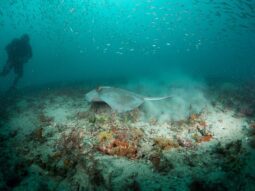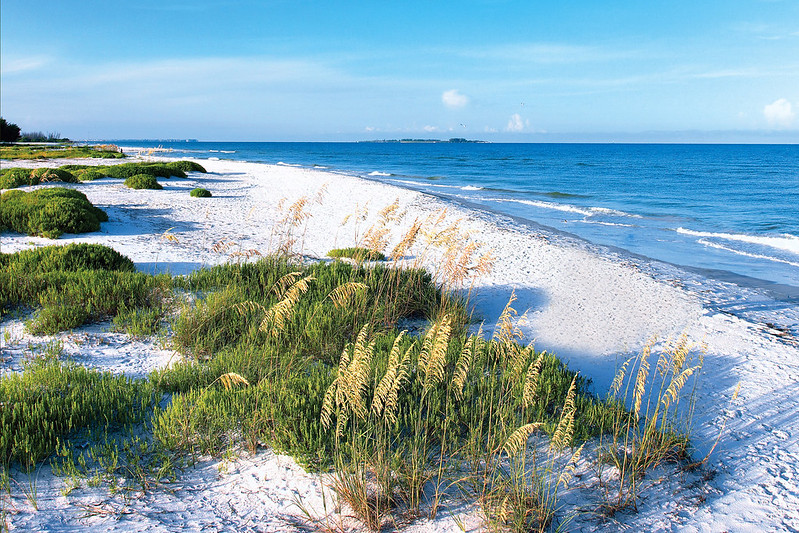Bridgeway Acres Landfill

What happens to garbage in Pinellas County?

Pinellas County follows the U.S. Environmental Protection Agency’s (EPA’s) Waste Management Hierarchy by managing garbage from the most preferred to least preferred methods: reduction of garbage created; reuse of resources; recycling materials and turning them into something new; generating electricity via the Waste-to-Energy (WTE) Facility; and landfilling as a last resort.
Garbage in Pinellas County is sent to the Solid Waste Disposal Complex (SWDC) in St. Petersburg. The SWDC is managed by Pinellas County Solid Waste (SW) and includes a WTE Facility and a landfill.
Bridgeway Acres Landfill is Pinellas County’s second most preferred method of getting rid of garbage. Our primary method is the WTE Facility, where we burn our garbage to reduce it to ash (it takes up 90% less space by volume) and to generate electricity. Any garbage that can’t be burned is also buried in the landfill.
The landfill is expected to fill up in less than 80 years, so space is limited, and we are doing everything we can to extend its lifespan for future generations. We use an integrated solid waste management system, which means we do a little bit of everything through our waste reduction, reuse, recycling and disposal programs to save landfill space.
Facts about Bridgeway Acres Landfill
- 10-20% of all garbage created in Pinellas County is landfilled.
- Even though the WTE Facility is the primary method of disposing of Pinellas County’s garbage, 200-300 tons of garbage are still landfilled daily.
- When garbage is landfilled, it is covered daily with at least six inches of ash – the material that is left over after garbage is burned at the WTE Facility – to help limit odors and prevent garbage from blowing away.
- The landfill is permitted by the Florida Department of Environmental Protection to reach a height of 150 feet before it closes.
- Currently, the landfill is the second highest point in Pinellas County after the Countryside Golf Course. Check out our Virtual Tour for a view from the top of the landfill!
- There is a natural clay liner between the SWDC and the drinking water aquifer. Concrete walls that surround the SWDC are connected to the bottom clay layer, making a bathtub-like barrier, which keeps leachate (or “garbage juice”) out of the environment and our drinking water.
Pinellas County vs. Space
Pinellas County is the most densely populated county in Florida. This means we have a lot of people living and visiting our county but very little land space to fit everything. Because of this, Bridgeway Acres Landfill is Pinellas County’s one and only landfill.
Currently, the landfill has about 80 years of life left, but many factors can affect this number. For example, if municipalities in Pinellas County stopped recycling, that would take 20 years off the current landfill life, decreasing the lifespan from 80 to 60 years.
Once it closes, the County will have to manage incoming garbage in other ways. This will most likely include transporting it out of the county, which will cost three to four times more than it does now.
Waste-to-Energy is Essential to Landfill Life
Pinellas County Solid Waste’s main goal is to extend the life of the landfill so we can use it for as long as possible. Having a WTE Facility helps us save space in our landfill by reducing the volume of garbage by 90%. We process about 80-90% of the garbage we receive by burning it and burying the resulting ash in the landfill. By burning garbage in our WTE Facility, we are essentially shrinking it before putting it in the landfill so that it takes up the least amount of space possible. This is why WTE is preferable to landfilling on the E.P.A.’s Waste Management Hierarchy.

turn 10 trucks of garbage into one truck of ash. This is a rough example.
Without the Waste-to-Energy Facility, the landfill would have reached capacity and closed in the year 2007.
The WTE Facility is essential to us saving landfill space. However, the WTE Facility has its limits as well. It can process about 2,800 tons of garbage per day, and the storage pit can hold up to three days’ worth of garbage. If the Solid Waste Disposal Complex receives more garbage than the WTE Facility can process, we will have to resort to our final method of getting rid of the garbage—landfilling. The more whole, un-processed garbage we put in the landfill, the faster it will fill up.

There are a few reasons we would have to landfill garbage “whole” and not process it at the WTE Facility:
- Facility maintenance: Pinellas County shuts down the facility twice a year during planned events to complete routine service, cleaning and to replace any needed parts. This prevents avoidable breakdowns and delays. Sometimes, we also need to shut down the facility during unplanned events if repairs are needed.
- Facility is at capacity: If there is too much garbage coming to our site, and the WTE Facility cannot keep up with processing all of it, we will have to use the landfill (our second preferred method of disposal) to manage the garbage and relieve pressure from the facility.
- Some materials cannot be processed: Some materials are not burnable and cannot be processed through the WTE Facility. Materials such as drywall, concrete, brick and other construction debris have to be landfilled whole because they will not burn in the WTE Facility. These types of materials can be taken to local construction and demolition debris recyclers and made into something new. Visit the Where Does It Go? Search Tool to find out where to recycle these types of materials and more. This search tool offers local resources for reuse, recycling and disposal for hundreds of materials.
Watch the video below to see what the landfill looks like when we have to send garbage to the landfill due to one of the reasons listed above. Pay attention to the pile of gray ash and the pile of garbage – the ash takes up a lot less space than the whole garbage does. That is why the WTE Facility is so important to Pinellas County saving space in the landfill!
Solid Waste Master Plan
You’re probably thinking, “this seems like a problem; does the County have a plan?” We do! The Solid Waste Master Plan was published in February 2020 and lists 28 strategies for how SW plans to reach its vision of zero waste to landfill by 2050.
To reach this vision, Pinellas County Solid Waste will team up with local governments and organizations to minimize the waste we create as a community, increase what is recycled, process as much garbage as we can in the WTE Facility and responsibly manage whatever is left over.
The strategies in the plan aim to save space in the landfill and increase its lifespan. Pinellas County Solid Waste is actively working on the plan. Some of the strategies include; developing a Low Waste Event Guide to be used by departments within Pinellas County.
How can I help extend the landfill life?
As outlined in the E.P.A.’s Waste Management Hierarchy, the preferred method of getting rid of items is by reducing waste (not creating it in the first place) and reusing items to prevent them from being thrown away. Examples of reducing and reusing include swapping your single-use plastic water bottles with a reusable water bottle or bringing your own bags to the grocery store. And remember, you don’t have to be perfect — making small swaps here and there can make a big difference.






Recycling is the second-best method of getting rid of something. Recycling is the process of taking something old and making it into something new, which gives a material a new use. Ever wonder how recycling works in Pinellas County? Visit our How Mixed Recycling Works in Pinellas County webpage to learn what happens to your recyclables after you place them in your bin!
Reducing, reusing and recycling are important practices that will help Pinellas County achieve its vision of zero waste to landfill by 2050 and help preserve the life of the County’s one and only landfill. These methods will keep usable items out of the garbage, preventing them from taking up the limited space in our landfill while also preserving our environment for future generations.






Tour the Solid Waste Disposal Complex

Interested in learning more about Pinellas County’s Solid Waste Disposal Complex and how reducing, reusing and recycling can help save space in the county’s one and only landfill? Learn how to sign up for a tour by visiting our Educational Resources page!
Can’t make it for an in-person tour? Check out our virtual tour!
Additional Resources
- Where Does It Go? Search Tool
- Recycle Guide & Downloadable Signage
- Household Chemical Collection
- Collection: Garbage & Recycling
- Hours: Solid Waste Disposal Complex
- Disposal Fee Information
- Educational Resources: Garbage and Recycling
- Recycling FAQ
- Map of Recycling Drop-Off Centers
- Artificial Reef Program
- Mulch Pickup Program
- For Businesses: Garbage & Recycling Resources
- How Mixed Recycling Works In Pinellas County
- Video Library: Garbage and Recycling
- Holiday and Gift-Giving Guide
- Pinellas Partners in Recycling
- Waste-to-Energy Facility
- Bridgeway Acres Landfill
- Solid Waste Master Plan
- Solid Waste Disposal Accounts
- Lealman Garbage and Recycling Collection
- Tampa Bay Recycles
- Why Recycling Is Important
- Discover Careers with Pinellas County Solid Waste
Questions?
Contact us at recycle@pinellas.gov or (727) 464-7500.
Updated on Aug. 8, 2024.











